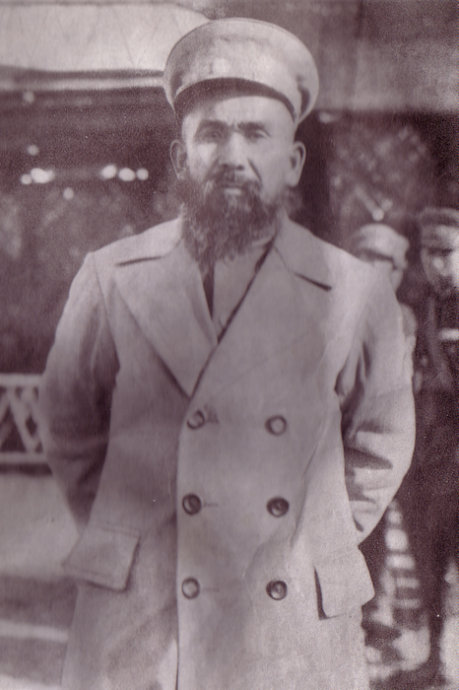Amazon sells historical flags of East Turkestan, prompting me to post this little essay. Since Amazon purged me, they are not very likely to ever sell any East Turkestani flags, though. LOL.
This is apparently the original flag of the “First
East Turkestan Republic” (ETR), more formally known as the Turkish Islamic
Republic of East Turkestan or the Republic of Uyghurstan. The ETR was a short
lived breakaway republic from China in 1933-34. It was centered on the famed
city of Kashgar while nominally laying claim to all of Xinjiang, the large
northwestern province of China.
The ETR was an Islamic republic based on the sharia, but it was also an expression of Uyghur separatism, the Uyghurs being a Turkic people living in Xinjiang. The local Kyrgyz, another Turkic group, also supported the anti-Chinese separatists. “East Turkestan” is the preferred Uyghur designation of Xinjiang. One of the more peculiar acts of the ERT was to expel all Swedish Christian missionaries from its territory! I didn't know Sweden had interests in the area, although I do know that famed explorer Sven Hedin passed through it. The ERT was quickly overrun and defeated by another Muslim group, the Hui, who were loyal to Chiang Kai-sheks central Chinese government. The Hui are ethnically Chinese (Han).
The original flag of the ERT shows the Muslim shahada (profession of faith), a crescent and a star. While the shahada is obviously Islamic, the crescent and the star can be given both a Muslim and a Turkic interpretation, since similar symbols were used by the Ottoman Empire and the modern nation-state of Turkey. The ERT president, Hoja-Niyaz, later abolished the complex design in favor of the so-called Kök Bayraq or Blue Banner, which is identical with the flag of Turkey, except for the main color being blue rather than red. The Blue Banner is still used by Uyghur separatists in Xinjiang and internationally, and I have seen it several times at diasporic protests in Sweden.
Since this review is entirely based on web sources, I apologize for any factual errors it may contain. According to Wiki, Hoja-Niyaz made a failed attempt to collaborate with the Soviets after the collapse of the ERT, the Soviet Union having invaded Xinjiang contemporaneously with the conflict between the Uyghurs and the Chinese. Like many others, he was eventually arrested and executed on Stalin's orders, accused of being a – wait for it – “Trotskyite” and “Japanese agent”! And this from the same Stalin who had allied himself with White Guard émigrés during the Soviet intervention in East Turkestan!
But I'm digressing…
The ETR was an Islamic republic based on the sharia, but it was also an expression of Uyghur separatism, the Uyghurs being a Turkic people living in Xinjiang. The local Kyrgyz, another Turkic group, also supported the anti-Chinese separatists. “East Turkestan” is the preferred Uyghur designation of Xinjiang. One of the more peculiar acts of the ERT was to expel all Swedish Christian missionaries from its territory! I didn't know Sweden had interests in the area, although I do know that famed explorer Sven Hedin passed through it. The ERT was quickly overrun and defeated by another Muslim group, the Hui, who were loyal to Chiang Kai-sheks central Chinese government. The Hui are ethnically Chinese (Han).
The original flag of the ERT shows the Muslim shahada (profession of faith), a crescent and a star. While the shahada is obviously Islamic, the crescent and the star can be given both a Muslim and a Turkic interpretation, since similar symbols were used by the Ottoman Empire and the modern nation-state of Turkey. The ERT president, Hoja-Niyaz, later abolished the complex design in favor of the so-called Kök Bayraq or Blue Banner, which is identical with the flag of Turkey, except for the main color being blue rather than red. The Blue Banner is still used by Uyghur separatists in Xinjiang and internationally, and I have seen it several times at diasporic protests in Sweden.
Since this review is entirely based on web sources, I apologize for any factual errors it may contain. According to Wiki, Hoja-Niyaz made a failed attempt to collaborate with the Soviets after the collapse of the ERT, the Soviet Union having invaded Xinjiang contemporaneously with the conflict between the Uyghurs and the Chinese. Like many others, he was eventually arrested and executed on Stalin's orders, accused of being a – wait for it – “Trotskyite” and “Japanese agent”! And this from the same Stalin who had allied himself with White Guard émigrés during the Soviet intervention in East Turkestan!
But I'm digressing…

No comments:
Post a Comment